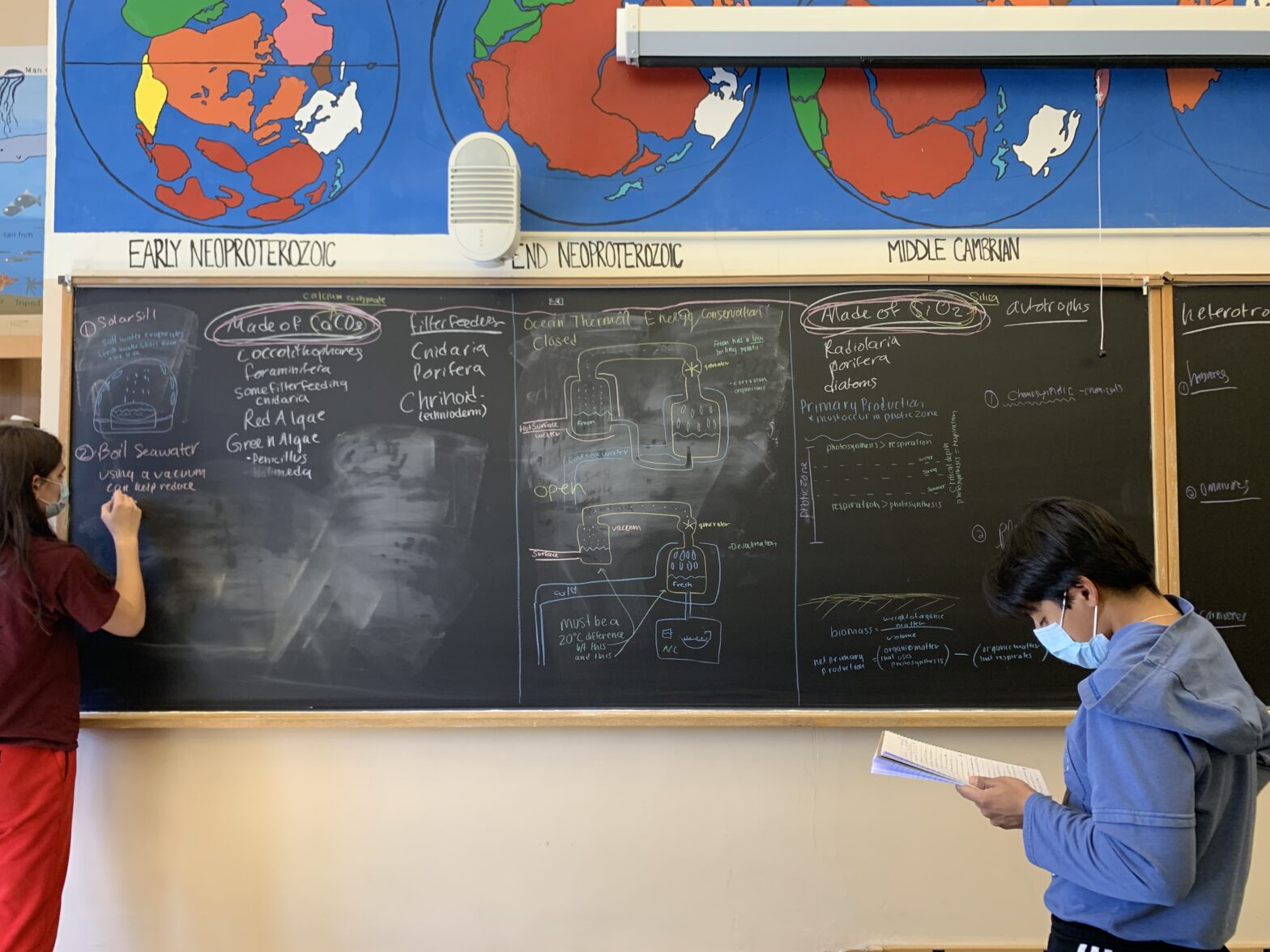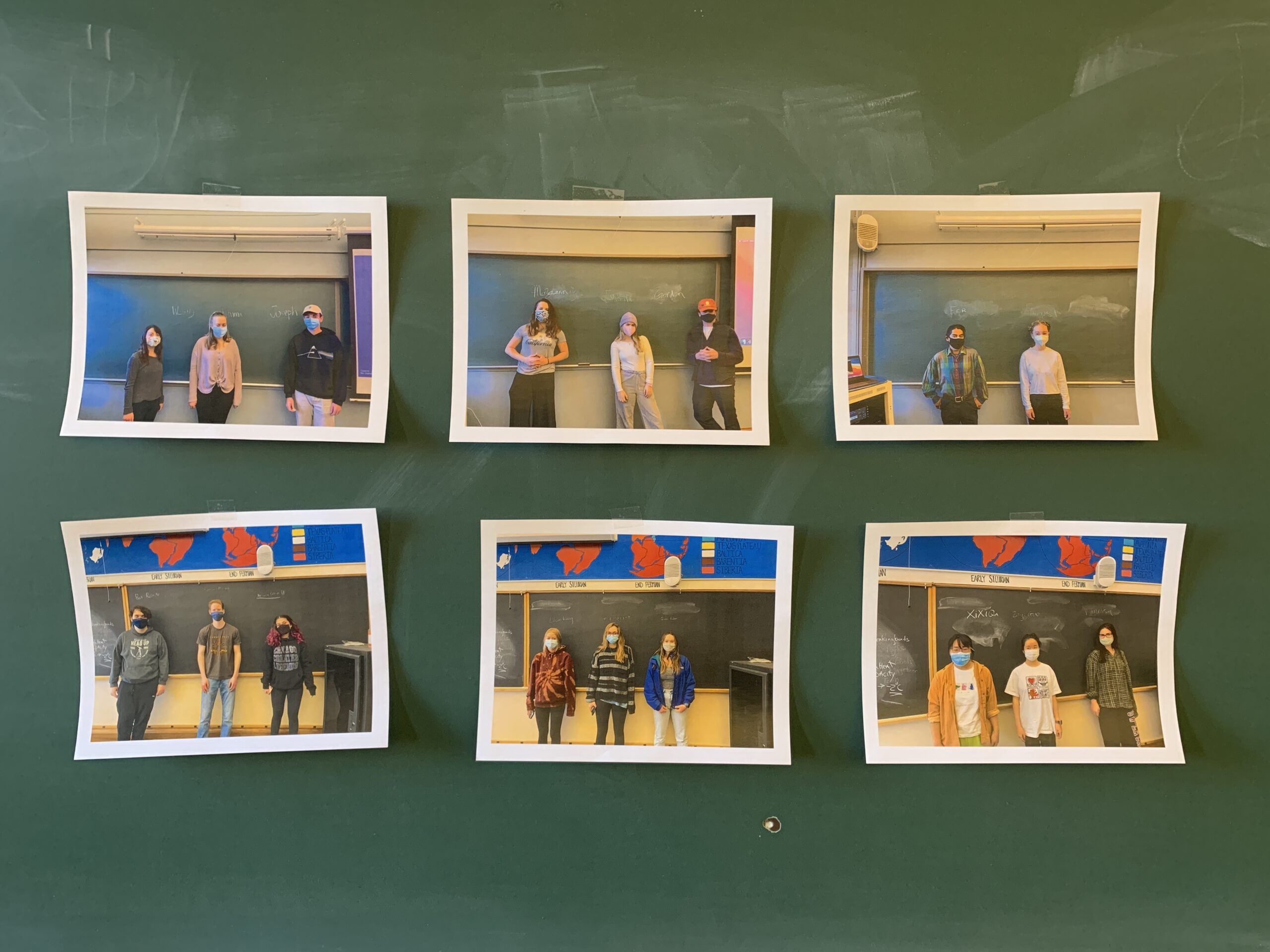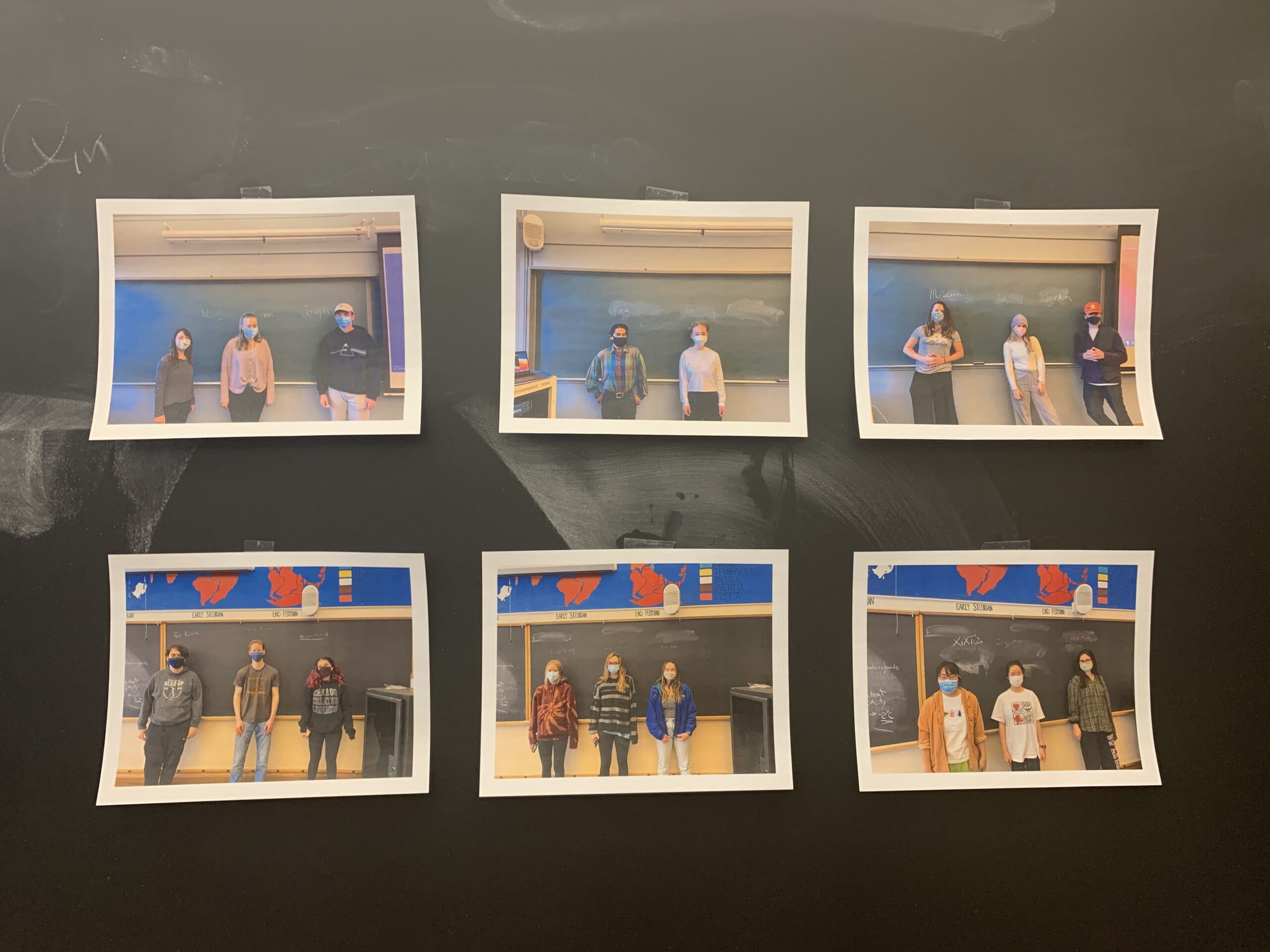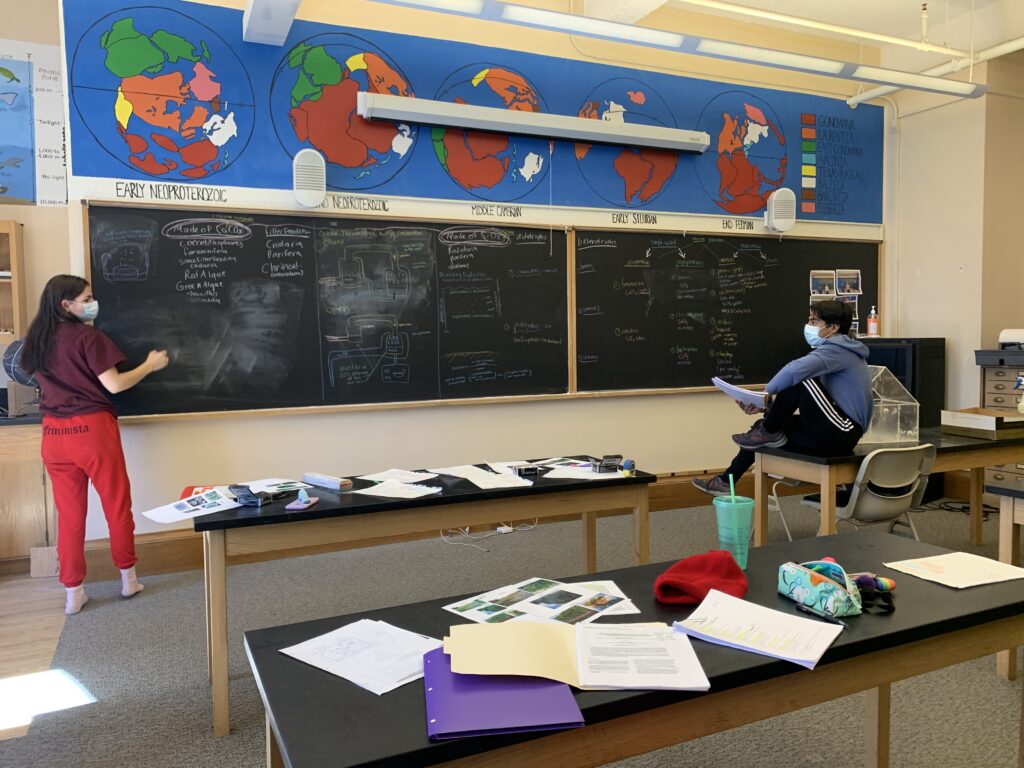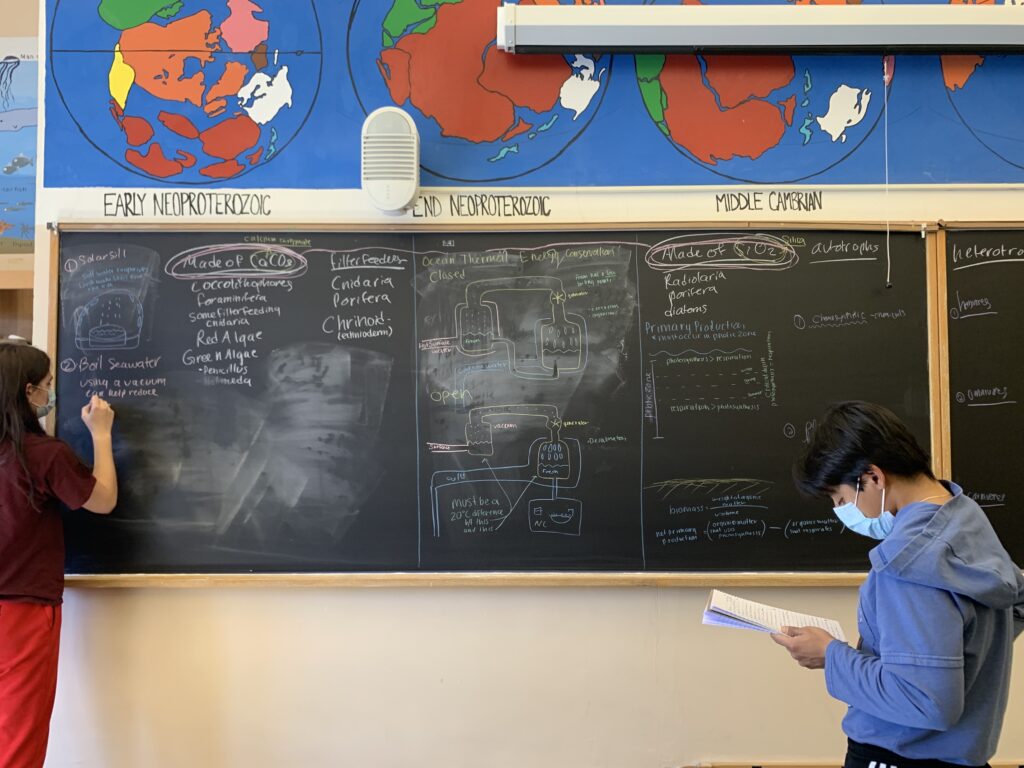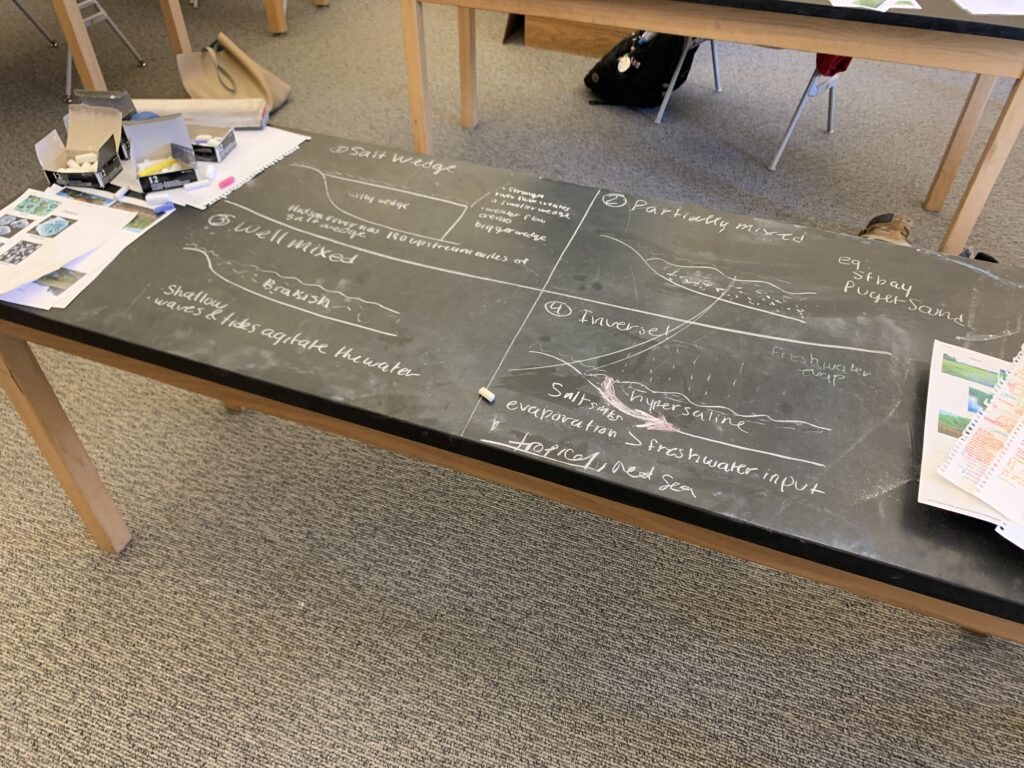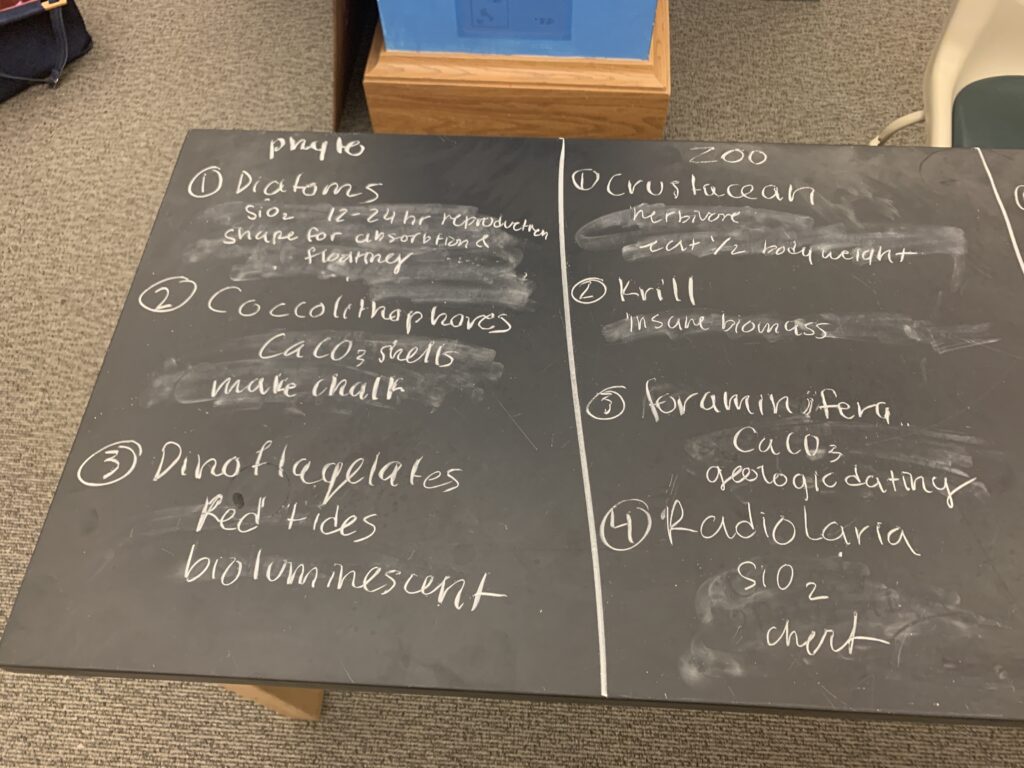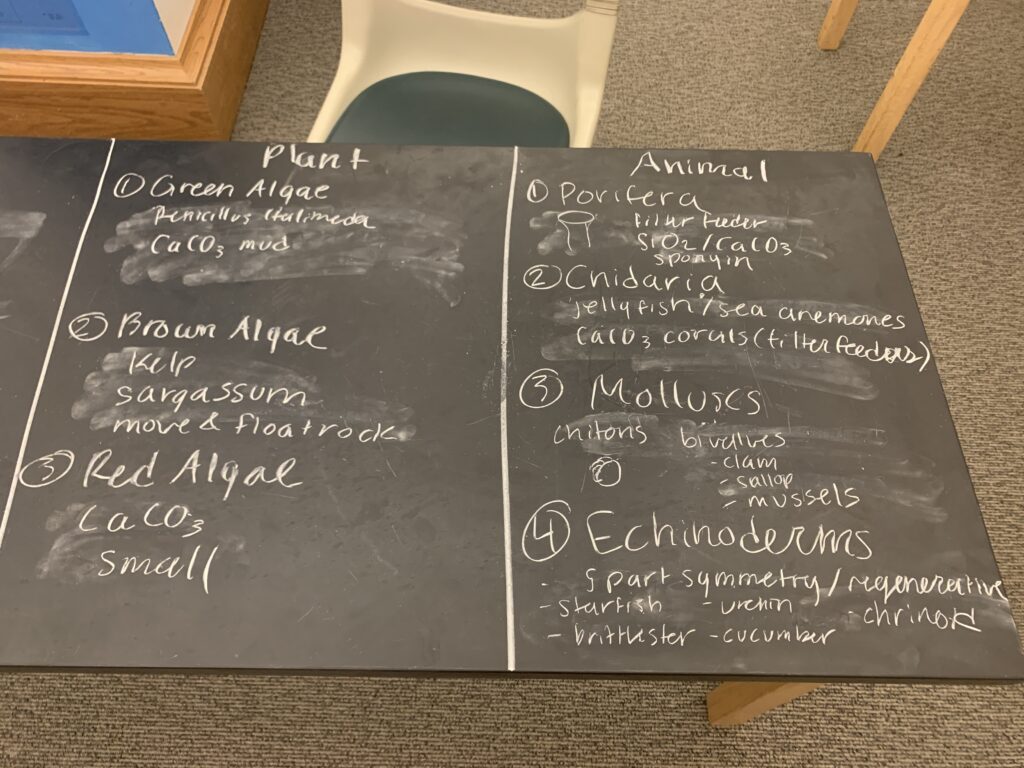Throughout the course of my first semester at CC, which was entirely online due to COVID-19, many of my professors reminisced over the “magic in the CC classroom,” which always held the implication of a physical space. In my previous blog posts about GY115: Oceanography, which I took during Block 5, I covered how I got into the class and what in-person learning looked like day-to-day and during field experiences in the context of the COVID-19 pandemic. These posts detailed the highlights of the block, but did not dive into the most transformative element of the class: my experience of learning with and from my peers in the classroom (and often outside of it).
I have yet to appreciate the magic in the CC classroom that occurs in a world where COVID-19 does not dominate most aspects of everyday life, but I believe I got a good taste of it in my in-person learning experiences last block. I’m currently loving my Block 6 class, SW272: Cultural Landscapes of the Southwest with Eric Perramond, but I wanted to share one last post about Block 5. Connecting with peers during COVID-19 can be tricky, but I hope to apply some of my takeaways from my in-person class to my future online classes—maybe you can too!
Several weeks ago, when I first walked into Paul’s oceanography class, I did not see any familiar faces. However, I knew I would have random questions about the class, and it can be nice to have a peer to get clarification from. So, during our break on the first day, I boldly introduced myself to someone random as we all mingled in the hall: Fer Juárez Duran. After some brief talk about our academic interests, I added Fer into my contacts—I now knew one person!
Since Fer and I were in different “cohorts” (the class was split into two classrooms to adhere to social distancing guidelines) we only saw each other during breaks, but we quickly connected via text. I had recently decided to try communicating more with friends via voice message texts, to feel more connected at a time of lots of disconnect, and Fer quickly bought into the idea—most of our initial conversation was actually not in person, but through voice messages. I loved hearing about Fer’s interest in space, which he is considering exploring more through an IDM (independently designed major) in Astrobiology.
In class, I found myself intrigued by another peer, this time someone in my cohort: Vanessa Klaers. Every day, Vanessa zoomed into the room via razor scooter. During class, Vanessa was quick to pause Paul’s lecture with a burst of questions, questions that I myself had been wondering but was too shy to ask. Oceanography was my first STEM class on the Block Plan, and I brought little foundational math and science knowledge with me—I was excited to learn about topics I had never before considered, but I was scared that I knew so much less than my peers. I didn’t want my peers to think I was stupid. Every time Vanessa raised her hand or shouted out a question, I was filled with relief. I wanted to be as unapologetic about my learning as she was.
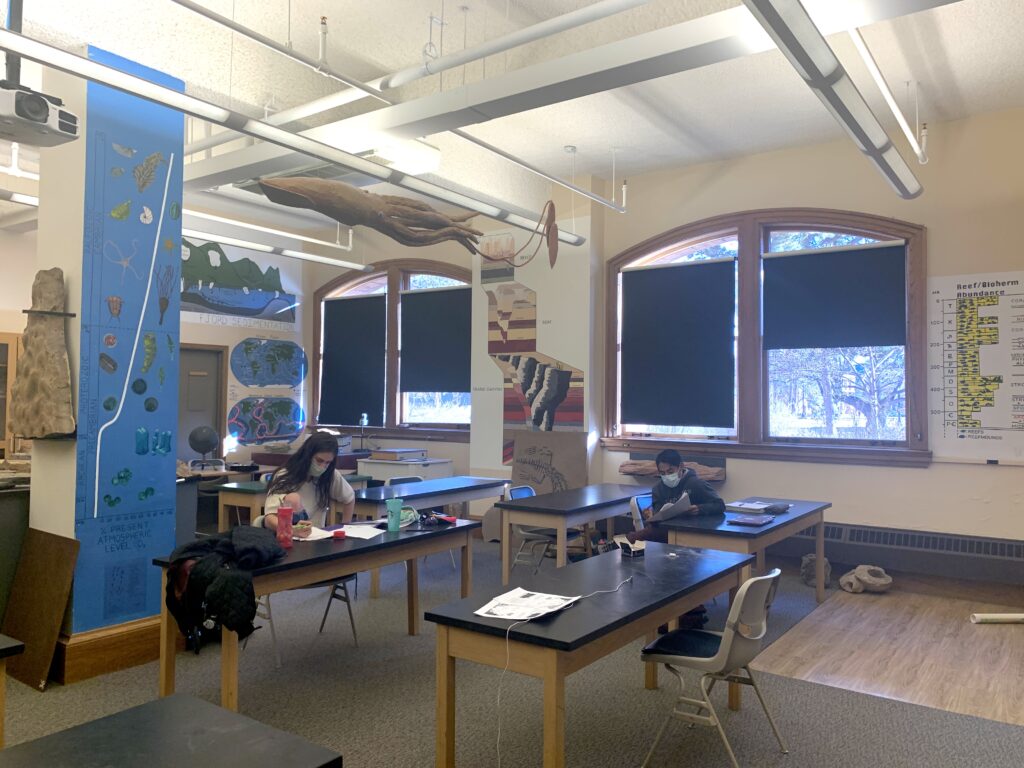
During first week, I also realized that I actually did know one person in my class: Ronan McCann! We had been in the same FYP in the fall, Dr. Sanchez’s The Empire Strikes Back: From Anti-Colonial Conflicts to Star Wars and Dr. Evitt’s Monsters and the Apocalypse. We hadn’t talked much back then—it is hard to connect with peers in completely online courses—but after meeting in person we quickly added each other to our contacts. Later that week, we got together to study in person for our first exam.
The structure of Paul’s class was pretty straightforward: daily lectures Mon-Fri, exams on each week’s content, and a couple field trips. Our daily homework was rewriting that day’s lecture notes by hand, with occasional science article summaries and projects such as a term paper and research proposal. The crux of the class was certainly Paul’s lectures, with the accompanying rewritten notes, so that is what Ronan and I focused on early Sunday morning.
We met at my favorite on-campus study spot—the large picnic table behind McGregor and above the track field—and talked through that week’s notes. Studying for an exam about science content was totally new to me, but talking through concepts out loud seemed to help cement them in my brain. Ronan and I talked through tectonic plate movements, the rock cycle, and the creation of oceans until he had to run to soccer practice—he is on CC’s team!
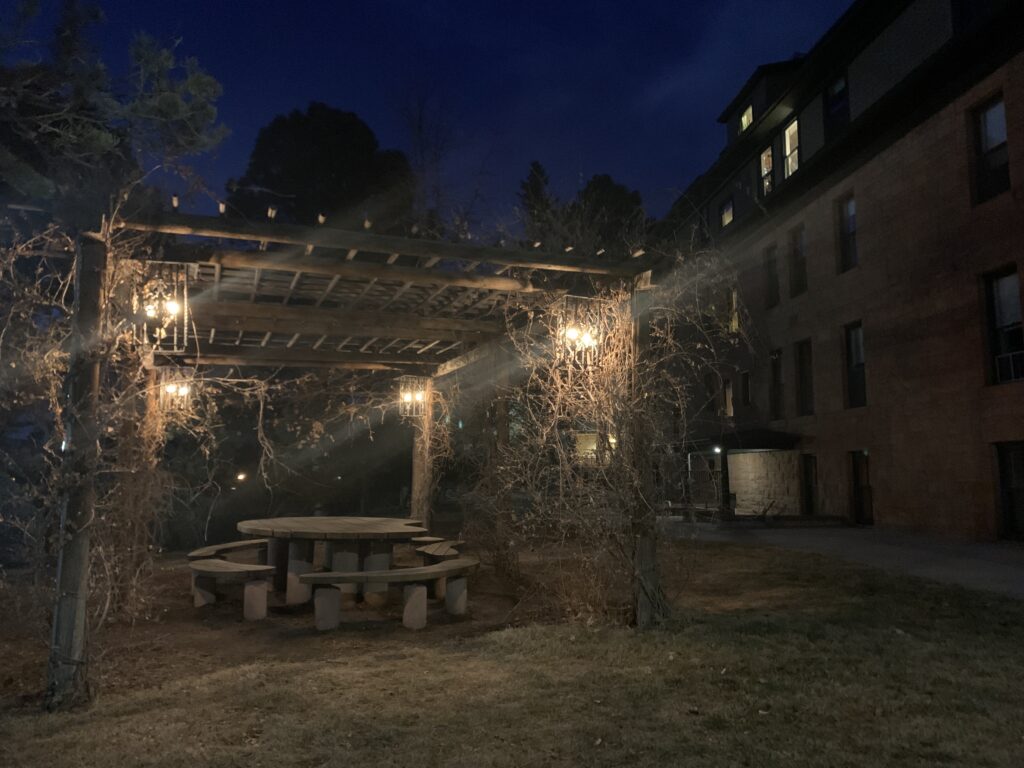
Later that day, I got together with Fer and Vanessa to study. At some point I had asked Vanessa if I could add her into my contacts, and I quickly made a group chat with her and Fer and I. We used this chat to make a plan for studying together in person. We decided to meet in the Mathias first floor lobby, where Fer works at the front desk per his RA duties. Like with Ronan, we three verbalized that week’s learning to each other. We took turns asking each other questions and seeing if we could answer based on memory, turning to our notes when we got stumped.
At this session I got a glimpse of Vanessa’s beautiful notes. She had used unlined drawing paper and colorful pens in a way that made the science so wonderfully visual. Vanessa’s talent at making complicated topics feel approachable really shone in these sessions. We had talked a little about her interests in science and education and this study session revealed just how perfect of a fit that intersection is for Vanessa.
During second week, I met another one of my peers in an entirely unexpected manner. Our term paper, which was supposed to be ten pages on a geological, chemical, or biological aspect of oceanography of our choosing, was due later that week. I had never written a paper of this nature before, so I visited the writing center to get some perspective on reading scientific journal articles and organizing my ideas for the paper. I booked a meeting with writing center consultant Gordon Clark, who I selected because of his academic experience in environmental studies.
When I joined our zoom meeting, Gordon mentioned something specific about the class—there was no way he could know that detail about the homework…unless…he was actually in my class! I was totally shocked but I realized that I really did not know most of my peers in the other cohort. Gordon and I had a good laugh and connected about the class and environment in general, and I left the session feeling a lot less stressed about the term paper. To CC students reading this: take advantage of the writing center!
I love going to the writing center when I am in the beginning stages of a writing assignment, especially if I am feeling a bit stuck. In my session with Gordon, I got to decide what we worked on but Gordon routinely checked in to make sure the session was going in a direction I felt good about. My experiences with other consultants have been similar–consultants will always have lots of ideas for what can happen in a session, but they ultimately want the client to “set the agenda.”
Later that week I met Ronan and Gordon in the first floor lounge of my building so that we could all work on finishing our papers. I had moved from South Hall to Bemis partly through my first semester, but I only started utilizing the lounge as a work space during second semester. Because of COVID-19 restrictions, many on-campus buildings are closed or have limited capacity and sign-up slots. I like the Bemis lounge because it is spacious and has many seating options: a big dining table, comfy chairs, a couch. It is a good space to get together with a small group and do homework together in a socially distanced fashion.
Working around others can certainly be distracting, especially for people like me who enjoy nothing more than a spontaneous conversation. However, I like to think of it as a way to create a space for getting work done while also reducing alone time, which seems to be at an all time high due to COVID-19 guidelines that limit many kinds of social interaction. If we all choose to focus, doing work individually but around peers in common spaces can be a good way to feel less alone while also following CC’s pandemic guidelines.
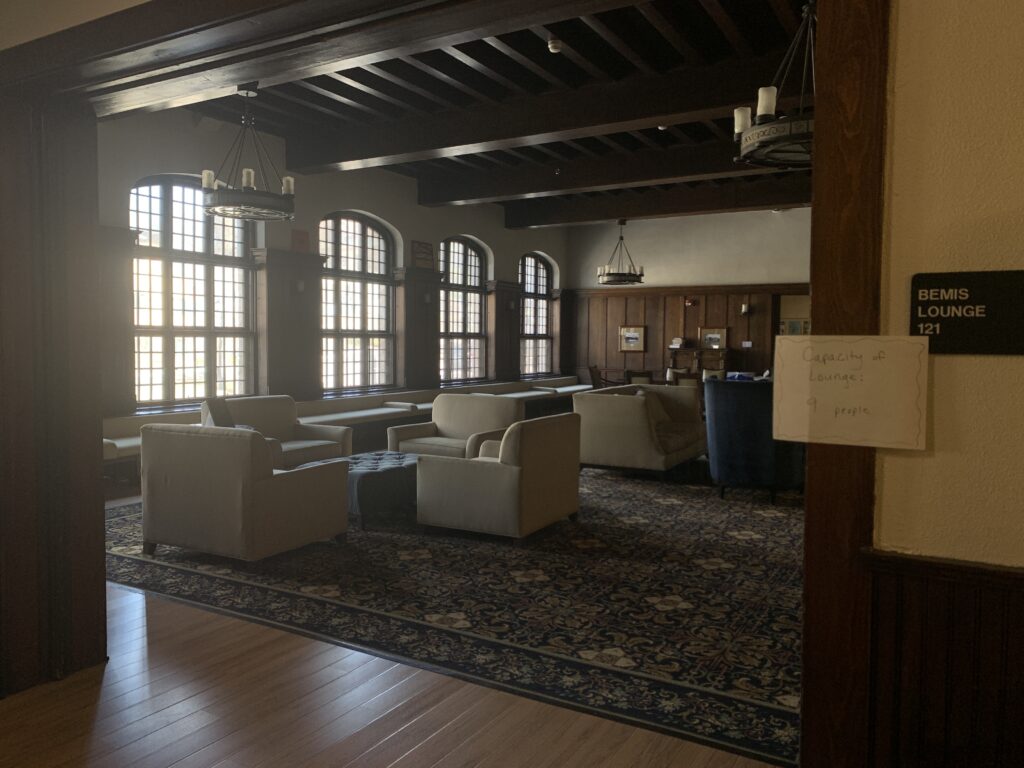
As the block drew to a close, I got in a few more study sessions with peers. The weekend before fourth week, I got together with Vanessa and Fer at Palmer. Another peer, Morgann Farley joined us, and like before, we talked through concepts out loud. This time though, we all got a little more visual, choosing to utilize the chalkboards at the front of the room. We took turns writing notes on the board and “teaching” as if we were Paul giving a lecture. When we ran out of space, Fer and Vanessa revealed to Morgann and I that the desks in Palmer can double as chalkboards—the more you know!
Before taking this class, I was worried that my STEM-savvy peers would intimidate me, but in this study session, Fer, Vanessa, and Morgann all demonstrated such a willingness to talk through ANY question, without even a hint of judgment. They made tricky concepts feel understandable, and I cannot adequately express how much gratitude I have for them. When I was finalizing my last article, which was about our field trips, I asked Vanessa if we could talk through“the science” of the trips. I wanted to make sure I was accurately representing our learning from that day. She Facetimed me immediately.
My connections with Fer, Vanessa, Ronan, Gordon, and Morgann were certainly a direct result of the opportunities afforded by an in-person class. However, there are some things that played a key role in us staying connected over the block (and beyond!) that I think can be applied in COVID-19 safe ways.
For me, the key to connecting was finding a way to see my peers in person, outside of class. This mostly manifested in us doing work around each other or studying with each other in common spaces that allowed for social distancing. For students who are not on campus or who do not feel comfortable with in-person meetings, there are still ways to connect!
If you have felt disconnected from your peers and the CC community this year, here are my ideas for connecting.
Step 1: Start a Conversation – This can be texting someone after you ask for their number, sending them an email on Outlook, DMing them on Instagram, FB messaging them, sending a zoom private chat, or saying hi if you run into them in person. Or, start a GroupMe to connect with multiple people!
Step 2: Connect! – Ask a peer or a few if they want to get together to do homework, talk through a concept from class, plan a project, etc. First floor lounges in Mathias and South, common spaces in all dorms, the library roof decks, South’s roof deck, and the picnic table behind McGregor are potential spaces to get together in a socially distanced fashion. For in-person get togethers, make sure to follow CC’s COVID-19 guidelines. For something non-academic, consider suggesting a walk around campus, perhaps on the Tiger Trail. Or, do a socially distanced lunch! For students who are not on campus or prefer to connect online, try school-related or fun meetings via zoom.
